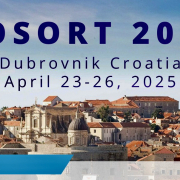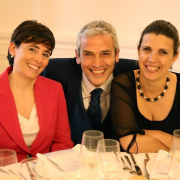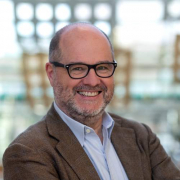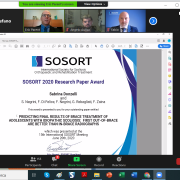SOSORT AWARD 2025: two of the four competing ISICO studies
Among the 12 studies submitted and accepted as oral presentations or posters for the upcoming SOSORT conference, scheduled to take place in Dubrovnik, Croatia, from April 23 to 26, four are competing for the AWARD, the most prestigious recognition in the field of rehabilitative treatment for spinal disorders. This marks a record for ISICO, which has already won 11 AWARDs over the years thanks to its research.
Below, we present two of these studies; the remaining two will be featured in the April newsletter.
1. The Psychological Impact of Children’s Spinal Deformities on their Parents: How to Measure with a Rasch-validated Questionnaire
ISICO has developed a new questionnaire to assess the quality of life of parents of children with scoliosis undergoing conservative treatment.
By analysing the content of the scoliosi.org blog, which has collected contributions and responses from 24 scoliosis experts over the years, an initial version of the questionnaire with 48 questions was created.
This version was subsequently refined through repeated administrations to four different samples of parents and statistical analyses to improve its validity and reliability. After three revisions, the questionnaire was reduced to 18 questions, demonstrating good reliability and validity, with no significant differences based on the parent or child’s age or gender.
“Dealing with scoliosis is not just about the patient; it deeply involves the family as well,” explains Dr. Irene Ferrario, ISICO psychologist and one of the study’s authors. “Parents of children undergoing conservative scoliosis treatment can experience anxiety and stress, but until now, there were no specific tools to assess the impact of therapy on families. This new questionnaire represents an important step forward, offering a reliable means to better understand the difficulties faced by parents.”
The questionnaire will facilitate the identification of families’ emotional and practical needs, providing targeted support.
“At ISICO, we recognize how crucial family well-being is in the therapeutic journey of young patients. For this reason,” concludes Dr. Ferrario, “we continue to promote a comprehensive approach to scoliosis, considering not only the patient’s physical health but also their emotional balance and that of their loved ones.”
2. Geographic, Personal, and Clinical Determinants of Brace-Wearing Time in Adolescents with Idiopathic Scoliosis
Brace therapy is an effective treatment for adolescents with idiopathic scoliosis (AIS), and several studies have already investigated factors influencing treatment adherence using sensors. However, the role of variables such as geographic location (mountain vs. seaside, large city vs. small town, mountain vs. plain) or family income had not yet been explored.
“Through this study, we aimed to verify the influence of geographic, personal, and clinical variables—routinely recorded by doctors— on adherence to brace treatment,” explains Alessandra Negrini, ISICO physiotherapist and author of the research.
Researchers examined 1,904 adolescents with an average age of 13 years and an average scoliotic curve of 35° Cobb. Adherence was measured using a thermal sensor (iButton) applied to the brace, while the analysed factors included age, prescribed brace-wearing hours, geographic area (North, Central, Southern Italy), gender, skeletal maturity (Risser), curve type, presence of back pain, income level, altitude above sea level, and the distance of the residence from the sea.
The collected data showed that 90% of patients demonstrated good adherence to treatment (wearing the brace for more than 75% of the prescribed hours). Factors that positively influenced adherence included younger age, female gender, a prescription of more than 20 hours per day, and living in Northern Italy. The results suggest that climatic and social factors can influence treatment adherence.
“Understanding that certain factors can reduce adherence to treatment allows us to identify patients who may benefit from targeted strategies to improve compliance,” concludes Alessandra Negrini. “Thanks to this type of research, we can enhance the personalization of therapeutic interventions, adapting them to patient characteristics to maximize treatment effectiveness.”






